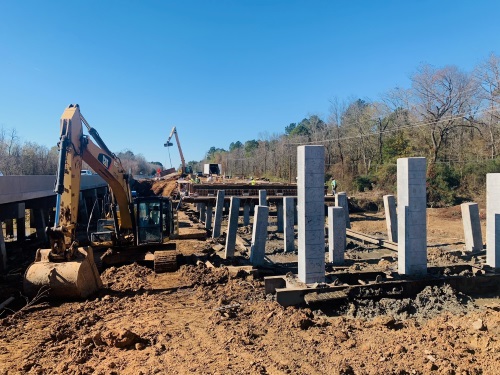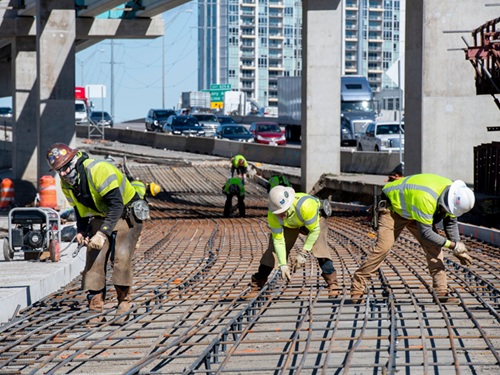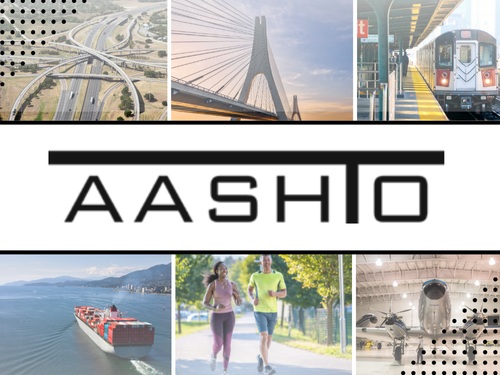A roundtable discussion held during the Transportation Research Board’s 2021 annual meeting explored how state department of transportation executives are adapting to the “dislocations” caused by the COVID-19 pandemic so they can continue to improve the quality of life and economic opportunities for all people.
[Above photo by the Louisiana DOTD.]
“It goes without saying that COVID has changed every aspect of our lives and will leave scars that will take a long time to heal,” explained Victoria Sheehan, commissioner of the New Hampshire Department of Transportation and the American Association of State Highway and Transportation Officials 2020-2021 president.

Sheehan – who served as the roundtable’s moderator – added that, “every aspect of the transportation industry has been upended due to pandemic” with remote learning, telework, and steep increase in e-commerce changing traffic patterns across the country.
“This is challenging our traditional assumptions about transportation and could have major land use implications,” she said. “But we are also now beginning to see that there is light at end of the [COVID-19] tunnel.”
To that end, five state DOT CEOs provided their views on how the transportation changing due to the pandemic:
Kevin Thibault, secretary of the Florida Department of Transportation; Gregory Slater, secretary of the Maryland Department of Transportation; Diane Gutierrez-Scaccetti, commissioner of the New Jersey Department of Transportation; Margaret Anderson Kelliher, commissioner of the Minnesota Department of Transportation; and Shawn Wilson, Ph.D., secretary of the Louisiana Department of Transportation and Development and AASHTO’s 2020-2021 vice president.

“We know telework is here to stay in one form or another and may dramatically lower traffic volumes,” noted Florida DOT’s Thibault. “We clearly have not returned to pre-pandemic traffic levels quite yet – and we still do not know the long-term impact of that change.”
He referenced a 39-page macroeconomic analysis conducted by the Florida DOT that found the state’s transportation projects should yield an average $4 of benefits for every dollar invested in all transportation modes – including highway, transit, rail, airports, seaports and waterways, and spaceports – even despite the impact of the COVID-19 pandemic.
[Jim Tymon, AASHTO’s executive director, also illustrated in a recent LinkedIn op-ed the significant monetary benefits that result from transportation investments.]
“Good policy and planning as well as community engagement will ensure [transportation] continues to enhance quality of life and safety, protect the environment, and encourage job creation,” he said.
Effectively tracking the impact of those changes is also why good data collection will become more important, added Maryland DOT’s Slater.

“Data is what will guide changes in our [transportation] programs,” he stressed. “The bottom line is we need to focus on the short-term horizon of recovery from COVID-19 yet not lose sight of long-term trends caused by the pandemic. For us to manage these huge changes in demand, our data networks need to be more nimble and adaptable. It makes for a pretty challenging and exciting time – it will keep forcing us to think about the transportation system as a whole and not as individual modes.”
Yet those changes also serve to reinforce the “foundational role” of state DOTs within the transportation system, noted New Jersey DOT’s Gutierrez-Scaccetti.
“The transportation system never stops – it is a 24/7/365 operation and it requires attention,” she said. “We also know what happens if it is not managed in that fashion. That’s why we need to keep in constant communication with our customer base: our citizens, fellow agencies, and legislators.”
Minnesota DOT’s Anderson Kelliher noted that one of the “silver linings” of the stay-at-home orders imposed in response to the COVID-19 outbreak is often greater virtual engagement by the public in transportation projects.

“We’ve created more self-guided digital tours of transportation projects as part of that greater virtual engagement,” she explained. “We recently has over 1,000 people attend one of our “virtual open houses” for transportation project feedback. I guarantee you we could not have that kind of engagement at a school gym. So I am optimistic about how virtual open houses are improving engagement with the public.”
Anderson Kelliher emphasized that this increased level of engagement is also occurring at a time when the transportation is grappling with a multiple of difficult issues – including the impact of COVID-19 – at once.
“Folks are experiencing not only COVID-19 but systemic racism and climate change – it is all happening at once,” she emphasized. “So we are working hard through a focus on transportation equity to address all three. For these are issues we need to address with passion, ingenuity, and a commitment to public service.”

Louisiana DOTD’s Wilson noted that also means state DOTs need to place greater emphasis on meeting the needs of disadvantaged communities.
“Low income and disadvantaged communities have less access to virtual meetings as they typically have less access to technology,” he said.
“Broadband expansion still necessary especially in our rural areas, for example. So let’s re-visit how we use right-of-way and infrastructure to deploy more broadband,” Wilson added. “We also need to look at ways to empower communities to be innovative to solve such problems. So state DOTs need to be nimbler and more adaptable so we can have these difficult conversations with disadvantaged communities.”



